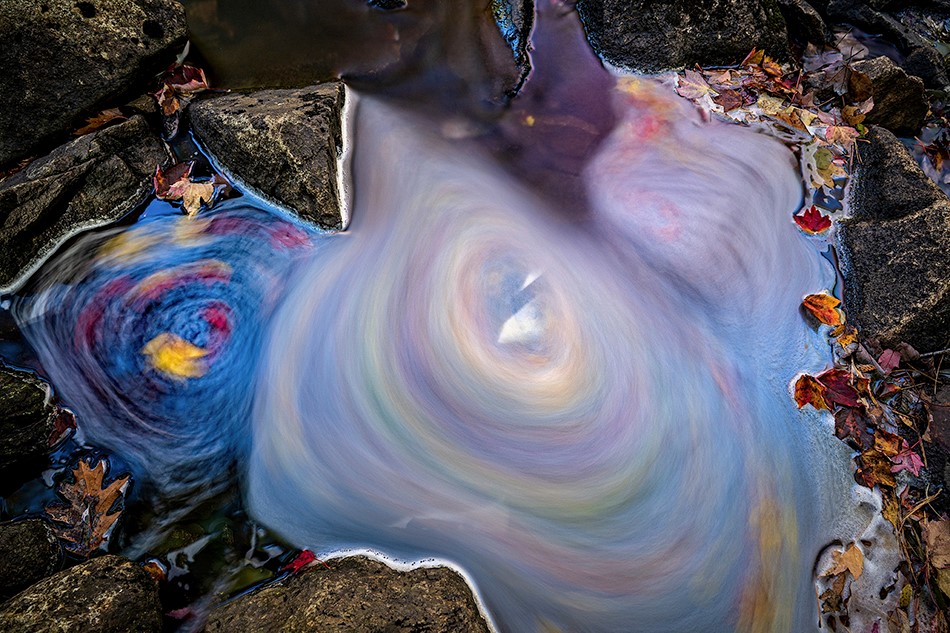
When I returned from Acadia NP in October of 2022, the colors were spectacular. Cree and I went out early to scout, and one day following a stream I found a fantastic image but only if I had the right filter and could imagine the outcome. What am I talking about?
If you have ever rafted or canoed on a river, chances are good you know what the term ‘eddy’ means. Eddies are areas where the water recirculates back upstream, often where the bank recedes from the main current. The river water will get pulled into the slack water beside it, and the net effect is the water goes back upstream and eventually goes right back out into the current. In other words, the water is making circles. Eddies can be enormous and scary (to kayakers) in big rivers, or very small, like you encounter with a tiny stream flowing under a canopy of fall leaves.
Every time I am photographing streams I look for eddies. Sometimes eddies will have branches, foam, or fall leaves floating in them. This means these fall leaves are now moving in a circle, following the current of the eddy. What is hard to imagine is how fast this is occurring. Some eddies move really fast, but the small ones can move at a snail’s pace.
Walking along the stream in Acadia I found three eddies all swirling in the same section of the stream. Two of the pools had white foam, one was clear, and all three had lots of colorful fall leaves. But these leaves were moving incredibly slow. So slow that if I didn’t stop and stare really hard you would think the leaves weren’t moving at all. But studying the leaves I did see just a tiny bit of movement. In the bright midday sun, I knew I could get my shutter speed down to about 1/4 second if I used my lowest ISO and smallest aperture opening. To get this image, I needed an ND filter.
I use 5, 10 and 15 stop Mor-Slo Singh-Ray ND filters. These filters screw onto the lens front, and block light. For this image I needed my 10 stop or 15 stop. I put on my 10 stop and was able to get an exposure of one minute. Since my Z9 allows me to use extended shutter speeds (in Manual Mode) I just dialed in one minute and took the image. A tripod kept everything steady. Exposing for one minute allowed the leaves to do a few rotations through the eddy, and the image I captured is at the top of this post. I’ve learned to try and visualize certain scenes at very long exposures. What you see in real time is not what you get in the final image. Instead, through the magic of photography, I can record 60 seconds into one single frame, an instant of time and motion. I always carry a 10 stop ND with me so I can capture these special scenes when I find them.
Tom Bol Photography

